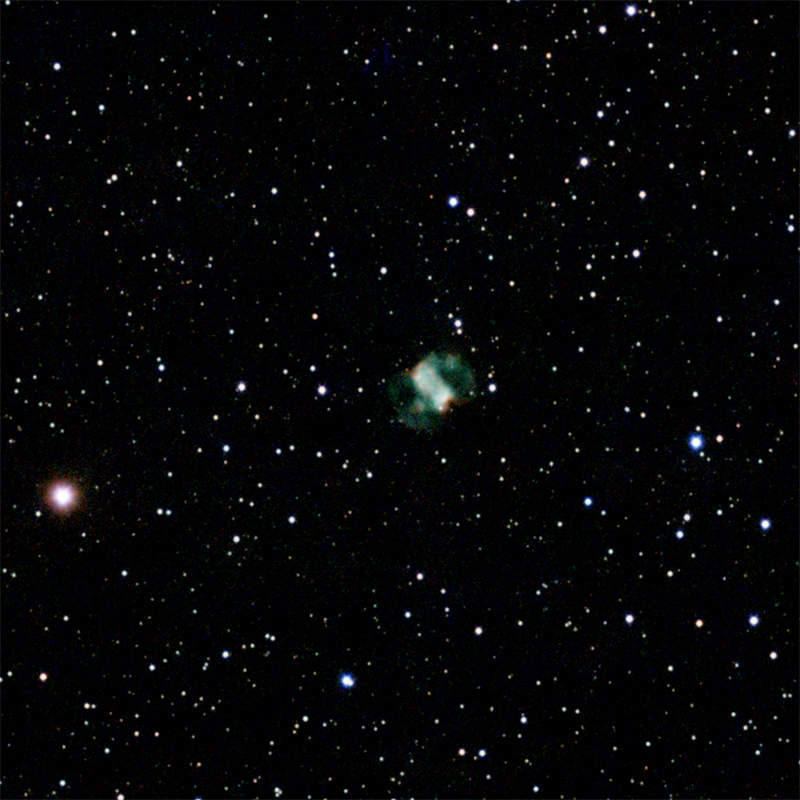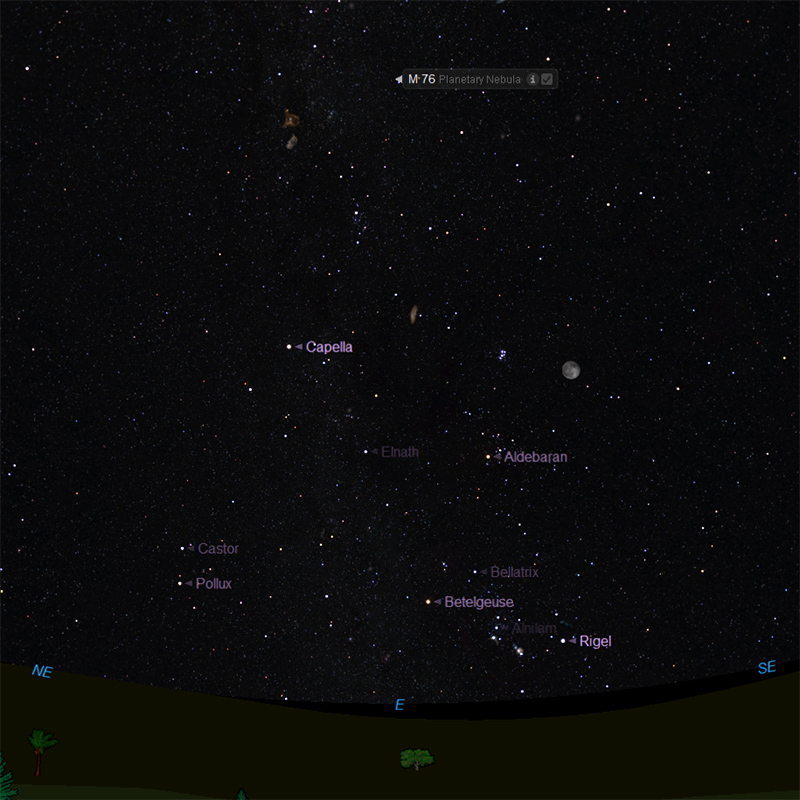M76 - The Little Dumbbell Nebula

Credits: Keith Turnecliff, Long Itchington
Messier 76 (M76), also known as the Little Dumbbell Nebula, is a planetary nebula located in the constellation Perseus.
It has the designations NGC 650 and NGC 651 in the New General Catalogue as it was once believed to consist of two separate emission nebulae.
The Little Dumbbell Nebula is sometimes also called the Cork Nebula or the Barbell Nebula.
It occupies an area of 2.7 by 1.8 arc minutes of apparent sky, which corresponds to a spatial diameter of only 1.23 light years.
The nebula’s size and faintness makes it one of the most difficult Messier objects to observe.
Large binoculars and small telescopes show M76 as a small, diffuse point of light. The nebula is better seen through medium-sized telescopes.
8-inch telescopes reveal its two lobes and the dark lane separating them, while large instruments show both the double-lobed structure of M76 and the faint halo surrounding it.
The best time of year to observe the Little Dumbbell Nebula is during the months of October, November and December.
It is a challenging object for southern observers because it never climbs high above the northern horizon when seen from locations south of the equator.
Facts about M76 by Keith Turnecliff
M76 is a planetary nebula, which is an expanding shell of gas around an aging or dying star, and it is one of only four planetary nebulas in Charles Messier’s catalog.
M76 is located in the constellation Perseus and is approximately 2,500 light-years away from Earth.
Discovered in 1780 by Messier’s colleague Pierre Méchain, M76 has an apparent magnitude of 12 and is best viewed in November or December.
While it is possible to spot M76 with large binoculars at a dark site, the nebula’s small size and faintness make it one of the more difficult Messier objects to observe.
Telescopes 8 inches or larger are needed to reveal the double-lobed structure of the nebula.

Credits: Image courtesy of Starry Night Pro Plus 8, researched and implemented by Keith Turnecliff.